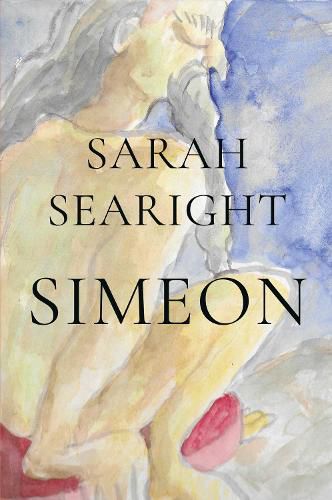Simeon
Sarah Searight

Simeon
Sarah Searight
This title is printed to order. This book may have been self-published. If so, we cannot guarantee the quality of the content. In the main most books will have gone through the editing process however some may not. We therefore suggest that you be aware of this before ordering this book. If in doubt check either the author or publisher’s details as we are unable to accept any returns unless they are faulty. Please contact us if you have any questions.
The first time I visited Simeon Stylites on his pillar was in 1970, just when Hafez al-Assad had become President of Syria. The pillar - in northern Syria - was the centre piece of a magnificent basilica built around it soon after Simeon's death in 459. The site is known as Qalaat Simaan, hill of Simeon. For some 40 years this holy eccentric chained himself to the top of a high pillar beside a major East-West Road that crossed northern Syria between the worlds of the Mediterranean and the Orient. His shrine has subsequently been visited by passers-by from all over the region.
That link, that Road, explains so much of Syria's history. I travelled on it whenever I visited Simeon - the Jinn as he was known locally - and his shrine. That is set some thirty kilometres west of the great mercantile city of Aleppo. Much further to the west is city of Antioch - Antakya in today's Turkey. The Road was traversed by armies, merchants, churchmen, and pilgrims. A small patch of the ancient road still remains beside the modern road.
The pillar also came to symbolise for me the history of this tragic, beautiful country. My 'timetable' for this story starts in 1970, three years after the 1967 war in which the Arabs were roundly defeated by Israel and which led to Assad's rise to the Syrian presidency. It is over fifty years since that first visit, years that have been marked by the chronic instability of the region in contrast with the immobility. I was fascinated by the immobility (and logistics!) of this man compared with the mobility of those
who crowded to, past, by, near him, moving on that axial Road between East and West. In this fictional account I saw Simeon as a symbol of stability in the maelstrom of the Middle East. Many of his visitors were seeking comfort, consolation for the tragedies of their lives. Many also came to give thanks for happy moments.
I was fascinated by the locality of his pillar - where it stood beside a road passed by caravans, armies, tourists, above all pilgrims - Christian and Muslim - travelling through what? - the Middle East after all. Everyone now as then on the move.
Not forgetting in all this the anguish of Syria, much of the latest instalment taking place while I have been writing. Qalaat Simaan - Simeon's citadel, the hill on which he stood - used to symbolise for me the one point of stability in the turmoil of the Middle East.
But now? Where is Simeon now? Where is the Jinn?
This item is not currently in-stock. It can be ordered online and is expected to ship in 7-14 days
Our stock data is updated periodically, and availability may change throughout the day for in-demand items. Please call the relevant shop for the most current stock information. Prices are subject to change without notice.
Sign in or become a Readings Member to add this title to a wishlist.


